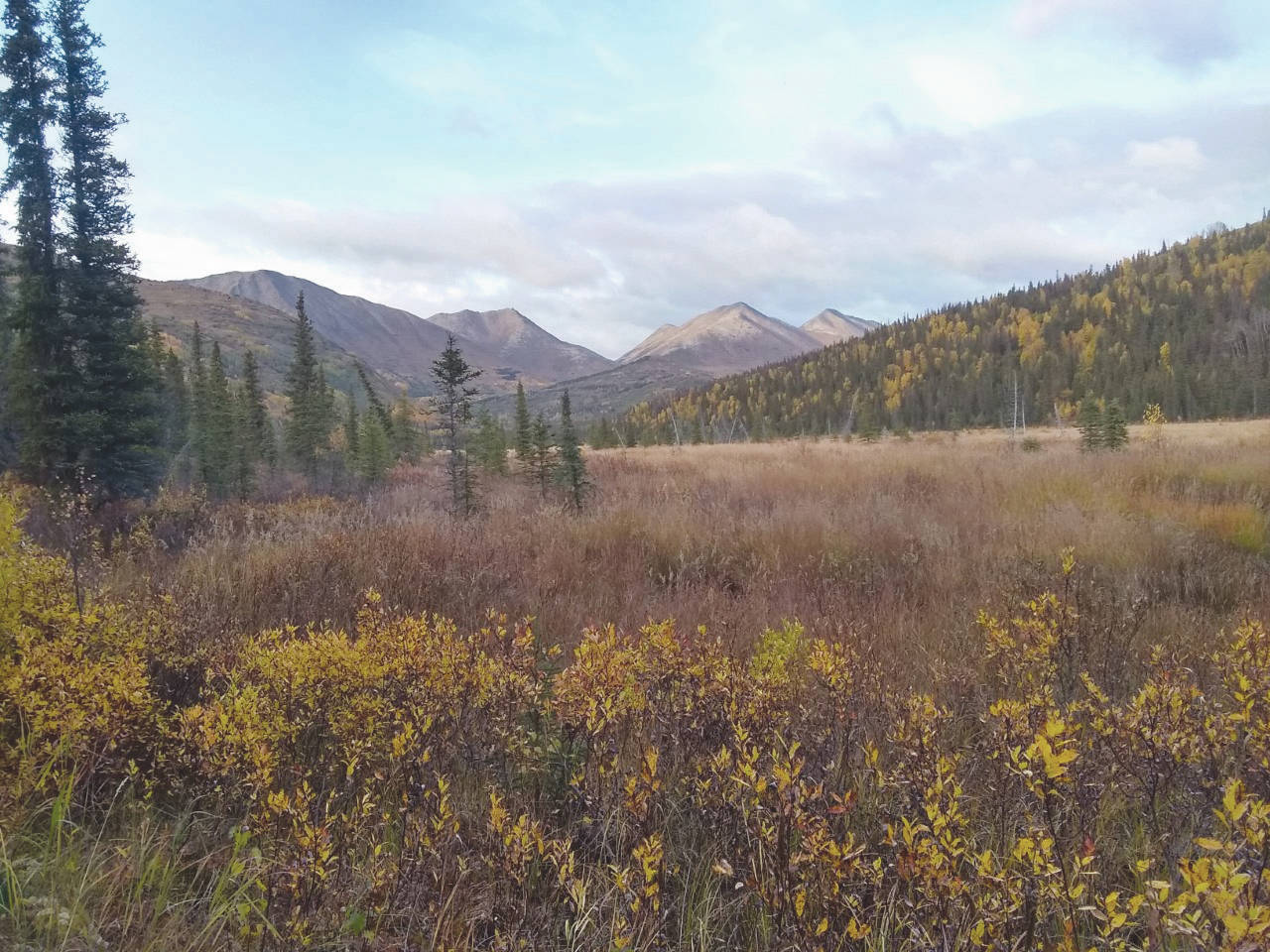As a park ranger for the Kenai National Wildlife Refuge, I get to spend a lot of time on the refuge’s trails and in the campgrounds. Often, I continue to enjoy the recreation areas that the refuge has to offer even after I clock out.
But it can be really nice to escape the refuge for a while, if only for a change of scenery. Another spectacular unit of our public lands to explore here on the Kenai can of course be found just to the east, in Chugach National Forest. One exceptional opportunity it offers is a hike on Resurrection Pass Trail.
Resurrection Pass Trail in Chugach National Forest is a clean, well-maintained trail with stunning views, gentle grades and many long chances at peaceful seclusion. The trail has its origins in the Alaska Gold Rush, when Resurrection Pass was a veritable highway, shuttling gold panners and land claimants between Hope and Cooper Landing.
Today, the pass corridor is home to a thru-hikeable multiuse trail dotted with public use cabins, on land owned by the U.S. Forest Service. You can still try panning for gold — though you may not be as successful as some were back in the day.
I was lucky enough to thru-hike it with my girlfriend and dog for the first time in late September, and could not have been happier to be out there with the fall colors on full display. We started at the north trailhead in Hope.
Day One was spent slowly climbing into the mountains, following Resurrection Creek to its headwaters higher up. The trail was lined with cottonwoods and aspens with leaves of the most vibrant yellow, and mosses and grasses in an assortment of greens, browns, yellows and reds.
The squirrels chattered at us and the grouse startled us more times than I care to admit. A stay at East Creek Cabin that night warmed our tired muscles and offered absolute solitude with a view.
Early in Day Two, we broke out above timberline. What a moment. The pass rolled out into the rugged tundra before us, framed by colorful peaks on all sides. The valley out of which we’d just climbed stretched back behind, ferrying the mountains’ clear waters down to meet the salty sea in Turnagain Arm.
We enjoyed the idyllic yet wild scenery for the next 10 miles, on trail that felt like a walk in the park and looked anything but. It was like walking through a postcard. Tracks in the mud told us that a recent fellow hiker had been a fairly large moose.
The weather, which had been forecast to be pretty wet, held together for us and we only got a short, light drizzle and some clouds. A few times there was even a healthy slice or two of sun to bask in as we ambled along. We didn’t see another soul all day until we made camp near Juneau Lake just before dark.
Day Three and the final leg of the journey came on inexorably, despite all our wishes for the trip to never end. We took our time moving through the southern valley. It was here that the Swan Lake Fire left its mark on the trail, and we marveled at the black desolation, already blanketed with green and fall-colored foliage just one year removed from the blaze.
Near Trout Lake, the vegetation changed to a mix of black spruce and tundra shrub, which was sporadic enough to give us a clear view of the mountains that still loomed over us. On the way, we passed a crew of Forest Service employees working hard to improve drainage on the trail. Always a treat to see fellow public lands pros getting after it out in their natural habitat.
The forest deepened as we neared Cooper Landing, and we hurried along at the prospect of a hot meal of non-trail food and a cold beer. With a few miles to go, we spotted the Kenai River below, and before we knew it we were back at the car and among civilization.
It can be a very rewarding experience to venture outside the same old day-to-day routine of life. New places and new activities can awaken a curiosity and joy in unexpected ways.
For me, the refuge feels like home. Stepping just beyond its boundaries brings me a sense of novelty and adventure. If you’re feeling stuck in the grind, it can’t hurt to step off the rutted path for a bit. Try something new. Go a little further than you normally do. You might be surprised by what you find.
Jack Carroll is a park ranger at Kenai National Wildlife Refuge. Find more Refuge Notebook articles (1999–present) at https://www.fws.gov/refuge/Kenai/community/refuge_notebook.html.

